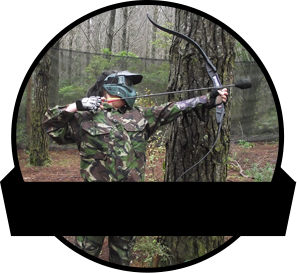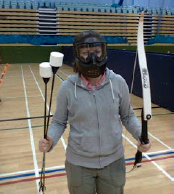A bolt normally comprises of a pole with a sharpened stone appended to the front end, with fletching’s and a knock at the other. Modern bolts are typically produced using carbon fiber, aluminum, fiberglass, and wood shafts. Carbon shafts have a favorable position that they don’t twist or twist, yet they can regularly be too lightweight to shoot from certaincombat archery bows and are costly. Aluminum shafts are more affordable than carbon shafts, however, they can twist and twist from use. Wood shafts are the most affordable choice yet frequently won’t be indistinguishable in weight and size to one another and break more regularly than different sorts of shafts. Bolt estimates change extraordinarily across societies and reach from exceptionally short ones that require the utilization of unique hardware to be shot to ones being used in the Amazon River wildernesses that are 2.6 m (8.5 feet) long. Most current bolts are 55 to 75 cm (22 to 30 inches) long.
Arrow and focal point

Bolts come in numerous sorts, among which are breasted, bounce followed, surged, clout, and target. A breasted bolt is thickest at the territory directly behind the fletchings and tightens towards the (nock) and head. A weave followed bolt is the thickest right behind the head, and tightens to the nock. A barrelled bolt is thickest in the focal point of the arrow. Target bolts are those bolts utilized for sport shooting instead of fighting or chasing and normally have straightforward sharpened stones. For wellbeing reasons, a bow should never be shot without a bolt nocked; without a bolt, the energy that is regularly moved into the shot is rather coordinated once again into the bow itself, which will make harm the bow’s appendages.
Arrow with sharpen end
The finish of the bolt that is intended to hit the objective is known as the sharpened stone. Generally, these are isolated things that are connected to the bolt shaft by either tangs or attachments. Materials utilized in the past for sharpened stones incorporate rock, bone, horn, or metal. Most present days pointed stones are made of steel, yet wood and other conventional materials are as yet utilized once in a while. Various kinds of pointed stones are known, with the most well-known being bodkins, broadheads, and piles. Bodkin’s heads are basic spikes made of metal of different shapes, intended to penetrate armor.A broadhead pointed stone is normally three-sided or leaf-formed and has a honed edge or edges. Broadheads are usually utilized for hunting. A heap sharpened stone is a straightforward metal cone, either honed to a point or fairly dull, that is utilized fundamentally for sport shooting. A heap head is a similar distance across as the bolt shaft and is normally only fitted over the tip of the arrow. Other heads are known, including the unpolished head, which is level toward the end and is utilized for chasing little game or feathered creatures and is intended to not puncture the objective nor install itself in trees or different items and make recuperation troublesome. Another sort of sharpened stone is a spiked head, typically utilized in fighting or chasing.

